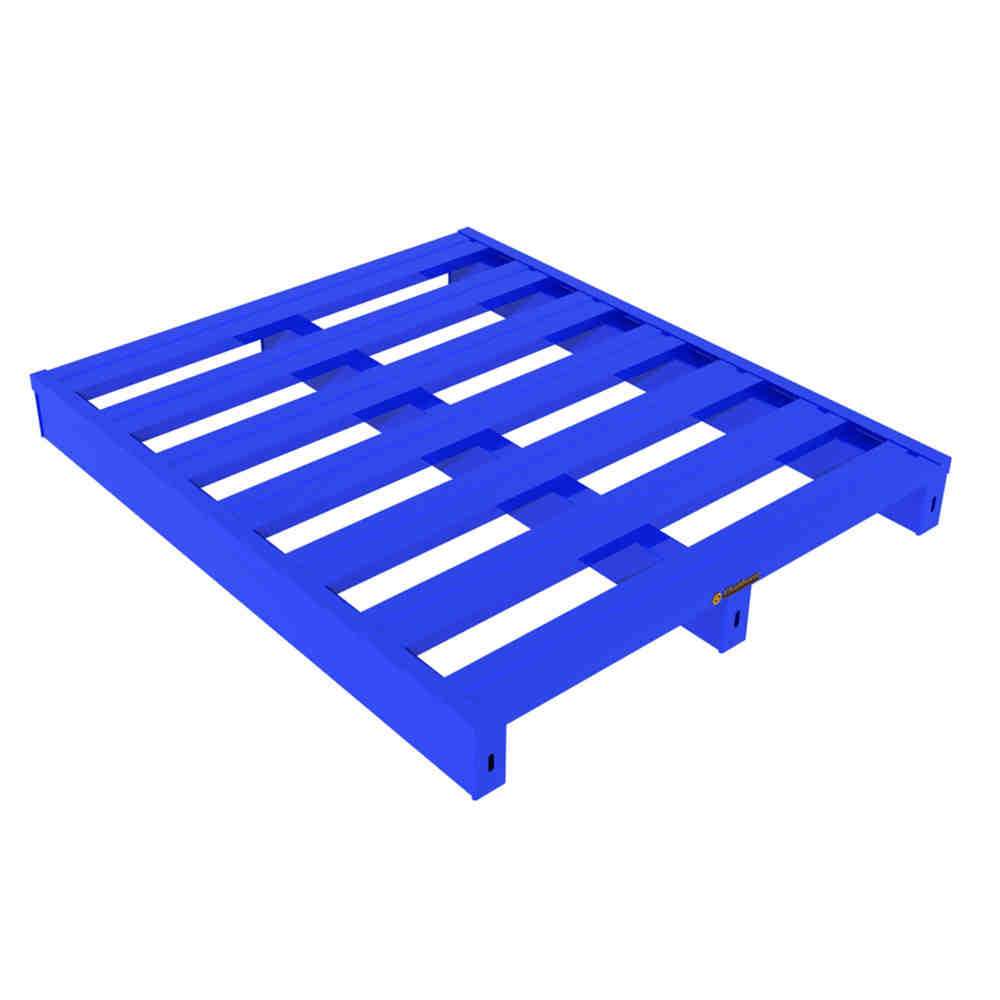5 tips for pallet use
2025-02-28 09:33
Pallets are a ubiquitous tool in modern warehousing, and their proper use is essential for maximizing efficiency and safety. While many understand that pallets are used in conjunction with heavy-duty shelving, there are several key considerations that are often overlooked. This article will delve into the correct usage of pallets, including weight limits, proper loading techniques, and safe handling practices.

Pallet Weight Limits
-
Maximum Load: The load weight of each pallet should be less than or equal to 2 tons. This limit ensures the structural integrity of the pallet and prevents accidents caused by overloading.
-
Center of Gravity: To further enhance safety during transit, the height of the cargo's center of gravity should not exceed two-thirds of the pallet's width. This precaution helps maintain stability and prevents tipping.
Pallet Arrangement of Goods
The method of arranging goods on a pallet depends on the type of goods, their quality, and the pallet's size. It's crucial to determine the most effective stacking pattern to ensure stability and maximize space utilization. The pallet load surface area utilization rate should not be less than 80%.
Here are some common pallet loading methods:
-
Rigid Rectangular Goods: Single-layer or multi-layer staggered stacking, with stretch or shrink film packaging for items like wood, paper, and metal containers.
-
Paper or Fiber Goods: Single-layer goods should be stacked in multiple layers and secured with bundling belts and cross strapping.
-
Bagged Goods: Multi-layer staggered compaction and palletizing for bagged goods.
-
Moisture-Sensitive Goods: For paper products and textiles requiring moisture protection, single or multi-layer staggered stacking with stretch or shrink film packaging. Add angle supports, cover boards, and other reinforcement structures.
-
Fragile Goods: Single or multi-layer stacking with wooden support partitions for fragile items.
-
Metal Cylindrical Containers: Vertical stacking with additional frames and slats for reinforcement.
-
Sealed Metal Containers: Single or multi-layer stacking with wooden covers for reinforcement.
Safe Pallet Handling Practices
To ensure the longevity and safe use of pallets, adhere to the following guidelines:
-
Sun Exposure: Avoid prolonged exposure to direct sunlight, as it can cause aging and shorten the pallet's lifespan.
-
Dropping: Never drop pallets from a height, as this can cause breakage and cracking due to impact.
-
Throwing Goods: Do not throw goods onto pallets from a height. This can damage both the goods and the pallet.
-
Even Weight Distribution: Distribute the weight of goods evenly on the pallet. Avoid concentrated or eccentric loads.
-
Flat Surfaces: Place heavily loaded pallets on flat, even surfaces to prevent instability.
-
Forklift Operation: When using a forklift or manual hydraulic truck, position the forks as far apart as possible on the pallet's forklift openings. Ensure the forks are fully inserted before lifting and avoid impacting the sides of the pallet.
-
Pallet Racking: When placing pallets on racks, use appropriate rack-compatible pallets. Do not exceed the rack's bearing capacity.
Securing Palletized Goods
There are several ways to secure goods to a pallet, including:
-
Binding
-
Gluing
-
Strapping
-
Stretch wrapping
These methods can be used individually or in combination to provide the necessary stability and security.
